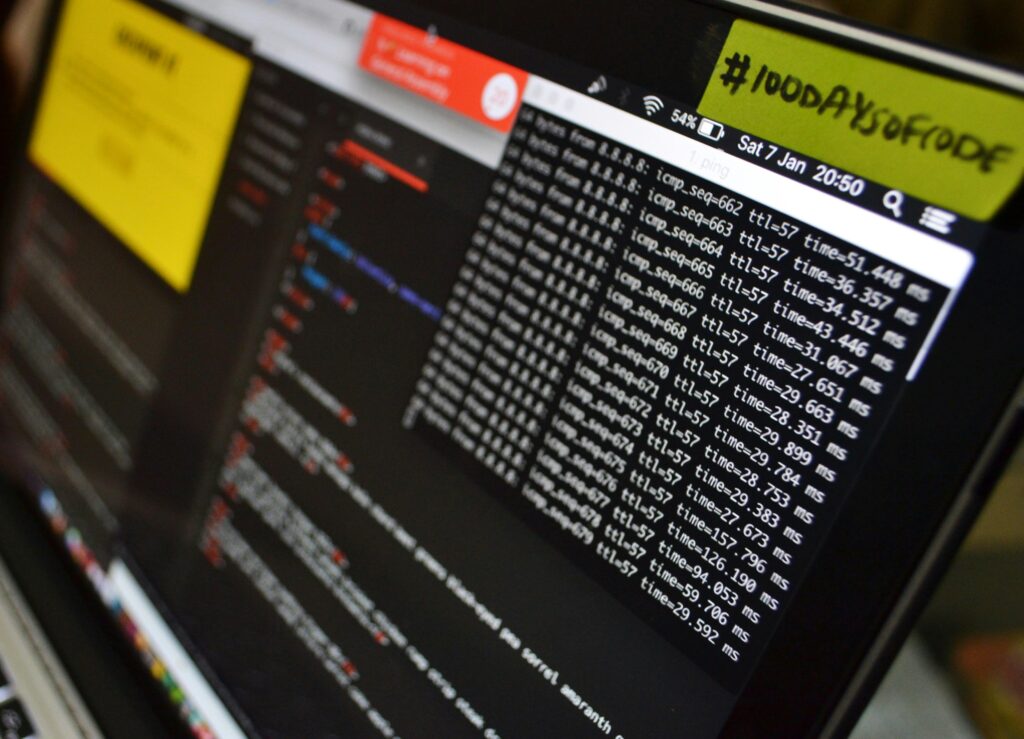In the ever-evolving landscape of cybersecurity, the Iranian threat group MuddyWater has elevated its game by introducing a new custom backdoor known as MuddyRot, or BugSleep, to target IT systems primarily in the Middle East. This advanced tool, built in C and featuring capabilities like reverse shell and file transfer, marks a significant shift from the group’s historical reliance on legitimate remote management tools. Since the Hamas-Israel war began, MuddyWater has ramped up its activities, using this sophisticated malware to breach systems and evade heightened scrutiny on remote monitoring solutions. Their new infection chain, leveraging platforms like Egnyte, underscores the continuous evolution of cyber threats and the need for robust cybersecurity measures. Have you ever stopped to wonder how deeply cyber threats in our digital age can infiltrate and disrupt? Well, pull up a chair, grab a cup of coffee, because we’re about to dive deep into one such enigma: the Iranian MuddyWater’s new custom backdoor attack. Intrigued? You should be, especially when organizations’ data safety hangs by a thread in the balance.
MuddyWater’s New Custom Backdoor: What’s The Scoop?
Our subject today focuses on how MuddyWater—a notably persistent Iranian threat group—has revamped its threatening toolkit with a new, tailored backdoor. Yes, you read that right.
Who Are MuddyWater?
So, who exactly are these digital villains? MuddyWater is an advanced persistent threat (APT) group with close ties to Iran’s Ministry of Intelligence and Security (MOIS). Since 2017, they’ve been poking and prodding at systems across the Middle East, particularly aiming their attacks at Israel. Their modus operandi has significantly evolved, and the implications are as vast as they are alarming.
The Earlier Methods: Phishing and Remote Tools
Originally, this group’s forte was phishing campaigns. Imagine somebody sneakily sneaking into your organizational emails and then spreading deceptive emails right under your nose. But it didn’t stop there. They used a range of legitimate remote management tools such as Atera Agent, Screen Connect, Tactical RMM, and SimpleHelp to gain control over systems. Again, legitimate tools being utilized for rather illegitimate purposes. Clever, right?
The Shift in MuddyWater’s Strategy: What’s New?
What prompted MuddyWater to change their course in the complex waters of cyber threats? Two words: custom backdoor. Get your snorkel ready as we’re diving deeper.
Name Game: MuddyRot or BugSleep?
Though identified by Sekoia as MuddyRot, Check Point Research coined a different yet equally ominous name, BugSleep. This sounds almost too benign for something that can wreak havoc on your IT systems overnight. Names aside, the real plot twist is in its operational mechanics.
How Does MuddyRot/BugSleep Function?
Much like an undercover agent in a spy movie, MuddyRot/BugSleep is an x64 implant (a type of malware code), developed in C. Under the hood, it’s performing tasks that could rival Jason Bourne’s resourcefulness. It deobfuscates strings, loads necessary functions, and even transfers files to and from the command and control (C2) server—seamlessly executing the malicious actors’ commands.
Unpacking the Infection Chain
To visualize MuddyWater’s latest strategy could be akin to watching a complex domino setup in motion. Typically, the infection begins with pros exploiting Egnyte, a secure file-sharing platform. Once this stage is set, the malware starts performing its crimes—deobfuscating strings, creating a mutex, and loading required functions. What this means in layman’s terms is that it avoids detection by masking its identity very cleverly.
This attention to detail in evasion techniques signals that we’re not dealing with mere script kiddies here but seasoned professionals hell-bent on staying under the radar.

How Have Remote Monitoring Tools Played a Role?
Security upgrades and scrutiny of remote monitoring tools have likely forced MuddyWater to craft and deploy this customized toolkit. As convenient as these tools may have been, heightened security measures and vigilance had to force their hand eventually.
From Remote Tools to Custom Implants
Initially, legitimate remote monitoring tools were their weapon of choice. Think of it as borrowing the house key rather than picking the lock. But increased scrutiny by security vendors limited this sneak-attack method, necessitating a more bespoke approach. Hence, MuddyRot/BugSleep was born.
Influence of Geopolitical Tides
It’s essential not to skim over how global events have heavily influenced MuddyWater’s recent upscaling in activities.
The Hamas-Israel Conflict as a Catalyst
The escalation of activities seems closely tied to geopolitical strife. Since the Hamas attack on Israel in October 2023, contributing to the onset of the Hamas-Israel war, MuddyWater has been notably active. Their focus on Israeli targets seems anything but coincidental given the timing.

Technical Dissection of MuddyRot/BugSleep
Now, if you’re into tech, brace yourself for a closer inspection of MuddyRot/BugSleep. If tech lingo isn’t exactly your cup of tea, don’t worry—I’ll break it down as effortlessly as that first sip of morning coffee.
Reverse Shell and Persistence
This fancy jargon only means the malware can execute commands remotely—a significant red flag for IT administrators. Moreover, it can ensure persistence, meaning even if you try to squish it, it finds a way to survive, like a digital cockroach.
File Transfer Capabilities
This part is almost like a courier service gone wrong. MuddyRot/BugSleep can easily download and upload files from the infected workstation, keeping the cyber villains remote but dangerously close via transferred data.
Dynamic Import Loading and Obfuscation
Remember our spy analogy? This malware is proficient at masking its traces via obfuscation techniques—like how a chameleon changes its color. It uses dynamic import loading to fetch necessary APIs only when they are absolutely needed, making it harder to detect.
Mutex Creation and Standard Tasks
Fib kids when tasks are homework—they’re fundamental yet crucial. The malware creates a mutex to control access and performs standard malware actions such as string deobfuscation and function loading. All this keeps it chugging along undetected.
A Growing List of Targets
Let’s not mince words; the espionage and data theft game has prominent players and varied interests.
Primary and Secondary Targets
Although Israeli organizations are front and center on MuddyWater’s radar, there are several secondary targets. Calculated strikes have also been noted in countries like Turkey, Saudi Arabia, India, and even Portugal. This broad span underscores the threat group’s capacity and expanding ambitions.

Continuous Evolution and Adaptation
You know how you need to keep a plant alive? Watering, sunlight, some TLC, maybe the occasional pep talk. MuddyWater’s backdoor needs similar nurturance, albeit for far more menacing outcomes.
Addressing Bugs and Enhancing Functionalities
It’s not surprising that these malicious actors are continually tweaking their toolkit, identifying bugs, and enhancing functionalities. This iterative process keeps MuddyRot/BugSleep not just alive, but thriving and growing stronger over time.
Past First-Stage Backdoors
Interestingly, this isn’t the group’s first rodeo with customized implants. Previously, they had utilized Powershell-coded first-stage backdoors before venturing into legitimate remote monitoring tools. In essence, they’ve always had a penchant for creating sneaky, disguised entry points.
Security Measures: What Can You Do?
Now that we’ve ventured pretty deep, let’s surface for a moment to discuss something proactive. What can you do to safeguard against MuddyWater and similar APTs?
Strengthening Phishing Defenses
Firstly, harden your defenses against phishing campaigns. Employee awareness training can never be overemphasized. Phishing exercises, spam filters, and email security gateways can be akin to fortifying your digital walls.
Regular Software Audits and Updates
Keeping your software updated is like maintaining a well-locked door. Regular audits can catch early signs of any malicious activity. Patch management ensures vulnerabilities are promptly addressed.
Monitoring Traffic and Anomalies
A keen eye on network traffic can help detect anomalies early. Employing advanced threat detection can help nip any malicious activities in the bud.
Multi-Factor Authentication (MFA)
Your passwords could be fortress walls, but it’s always good to have archers on the ramparts. MFA adds an extra layer of security, making unauthorized access significantly harder.

Closing Thoughts
And there you have it, folks—a detailed exploration of how MuddyWater has upped its game with this new custom backdoor. This cyber cat-and-mouse game isn’t ending anytime soon. So, awareness and understanding are vital.
Keeping abreast of these developments is crucial for anyone invested in cybersecurity. Knowledge, after all, remains our best shield in this evolving digital landscape. Stay curious, stay vigilant, and you’ll better safeguard your digital turf.
So, did this deep dive make the threat a bit clearer? I bet you didn’t expect a cyber thriller today, but here we are, and more importantly—prepared. Stay safe out there in the wild world of zeroes and ones.
Source: https://www.infosecurity-magazine.com/news/iran-muddywater-new-custom-backdoor/

